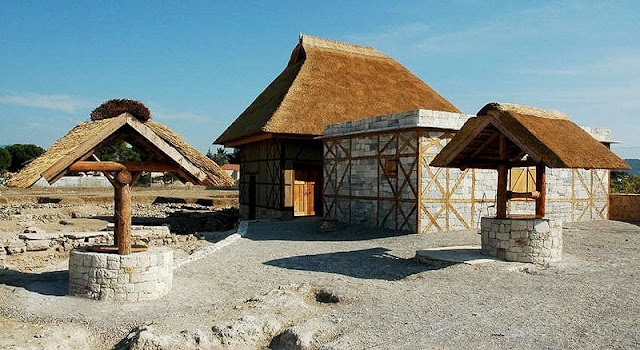
Which has an important place for Christians and the ancient city mentioned in the Bible Kilistra
Recognized as the apostle of Jesus and the disciples who spread the religion of Christianity to St. Paulos visited the center of Konya Meram district Hatunsaray Gökyurt village located within the boundaries of rock carved churches and settlements Kilistra'da a significant potential for religious tourism is.
Established in five different places in the natural rock formation in the Byzantine era parallel architecture of the ancient city of Klistra chapels and churches, religious buildings, structures are found in defense and security purposes.
Cruciform plan, and around the rock-hewn churches Kilistra'da striking land areas between the settlements in Cappadocia, Konya, Cappadocia with fairy chimneys because of the properties referred to as host. Kilistra, visited a place of pilgrimage for Christians is seen as a half.
Selcuk University Faculty of Arts and Professor, Department of History. Dr. Hasan Bahar, located in a region of volcanic Kilistra that its appearance is comparable to Cappadocia from time to time, he said. Konya, Cappadocia region,''he stated''that he describes this Spring, said:''Kilistra, as well as natural beauty, the beauty hidden in the rock-cut tombs in the Roman period, water reservoirs and residential areas are located. Later, the Prophet. Which the disciples of Jesus and the apostle St. Paulos recognized as the first missionary work has been done on the arrival of Christianity. The first Christians, using the rock tombs of the ancient sites of Rome established the small places of worship. Here chapels (churches), however, and carved into the rock and carved in the form of the outer part of the pilgrimage. This is our Greek cross, the Byzantine architectural style that we call the cross, 6 century onwards, is seen. Anatolia is one of the few chapels. That is also extremely valuable in terms of art history.''
Is located 55 kilometers away from Konya to visit Kilistra and daily reminders Spring,''especially in this region of Cappadocia tourism region of Antalya is tourism, although tourism is extremely easy to transport to why this was of interest. These areas often have to look good. Domestic and foreign tourists during a rally here neglected because of pollution caused by the image we are embarrassed,''he said.
'Orphaned and save this image to ruin'
Of care of the church and the surrounding rock that tells the Spring,''is located in Kilistra volcanic terrain and Gökyurt, deck, there are villages in this region, such as Botsan. Also consider the region's potential for tourism as a whole is very high. We need to do for services to tourism in these villages. Feature shows a ruined villages abandoned, these areas can be revived. Unattended and must save this image to ruin this region, integrate the tourism,''he said. Kilistra'ya show great sensitivity and to be sensitive to history that tells the Spring, Safranbolu enormous contribution to tourism in this region, adding that it is possible to see the viability of Cappadocia.























